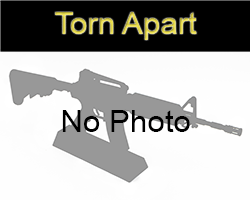AR-15 / M4A1
History of the AR-15/M4A1
Contrary to the belief of so many, AR does not stand for assault rifle but ArmaLite Rifle, after the company who designed it. In 1956 the American firearms manufacturer ArmaLite, designed the AR-15 off the AR-10 model. The idea was for it to use a new high-velocity round that was smaller and lighter allowing infantry to be able to carry more ammunition.
ArmaLite was struggling financially and were short on manpower, so in 1959 the rights to the AR-15 to Colt. Colt changed a few aspects of the design, most notably relocating the charging handle from inside the opening of the carry handle to the rear of the receiver. They then began marketing the weapon to various military services around the world. In 1962 the U.S. Military adopted it, the gun was rebranded the M16 in 1963, and it went into production and service in 1964. Colt Continued to use the AR-15 trademark for the semi-automatic-only rifles sold to civilians and law-enforcement.
Following the adoption of the M16 shorter carbine variants that were not initially conceived to be a front-line troop weapon. They were introduced for support troops, rear echelon, and special operations like close quarters operations. The first goal was compatibility with as many M16 parts as possible, however these sorter weapons had design issues resulting in loss of range and accuracy as well as a larger muzzle flash and blast.
In 1982 the US government went to Colt about a Carbine version of the M16A2. They worked with ArmaLite to develop and redesign these sorter rifles until the design was finished and given the designation M4 in 1987. The Army gave Colt the production contracts for the M4 in May and July 1993, and M4A1 for the US SOCOM operators in 1994.
The M4 carbine first saw action in the hands of US troops deployed to Kosovo in 1999 and it saw heavy use during the Iraq War. By 2005 the M4 had replaced most of the M16A2 as the primary weapon of the forward troops. It has also replaced most sub machine guns and some handguns in the U.S. Military due to is superior stopping power and ability to penetrate more modern body armor.
Since its release, many design changes and improvements have become standard across all AR-15 variants today. Some of these changes include the Feed ramps, the H2 buffer system, and upgraded extractor. The military M4 with its automatic fire also had an issue with the barrel where it would burst behind the front site under heavy fire. To mitigate this issue, they simply beefed up the barrel. This barrel would later be known as the SOCOM barrel, it also came with an unintended bonus. The change improved the barrel harmonics increasing the accuracy of the rifle.
GoatGuns Models




_Link.png)
_Link.png)





